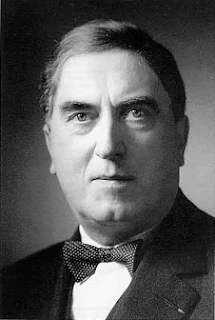I know that Maurice Duruflé is
not a British composer! Yet, he retains a huge popularity in the United Kingdom
with organists and audiences. I first discovered his music during an organ
recital at St Mary’s Episcopal Church in Great Western Road, Glasgow. It was
1976. The organist, whose name now escapes me, finished off his recital with
the Toccata from the Suite Op.5. I was seriously impressed
then and have enjoyed Duruflé’s music ever since.
Scherzo op.2 (1926)
Prélude, Adagio et Choral varié sur le thème du ‘Veni Creator’ op.4 (1926/30)
Suite op. 5 (1933)
Prélude et fugue sur le nom d’Alain op.7 (1942)
Chant Donné – Hommage à Jean Gallon (1949)
Prélude sur l’introït de l’Épiphanie op.13 (1961)
Fugue sur le thème du Carillon des Heures de la Cathédrale de Soissons op. 12 (1962)
Méditation (1964).
There are several unpublished pieces and fragments.
A few biographical notes will be of
interest. Maurice Duruflé was born at
Louviers, near Rouen, on 11 January 1902. At the age of ten he entered the choir
school at Rouen Cathedral where he studied piano, organ and theory. Here, some
key formative musical experiences were laid down. Most important was Gregorian
chant, which was to become an essential feature of his work. It was regularly
used at Mass in those pre-Vatican 2 days. Later, he moved to Paris where he
became assistant to the enigmatic Charles Tournemire at the Basilique Saint-Clotilde.
Entering the Paris Conservatoire in 1920, he had further studies with Eugène Gigout
and Paul Dukas. This gave him an incredible technical background as both an
organist and composer. As a result of this expertise, Duruflé was selected as
organist of St. Etienne-du-Mont in
In 1953 he married his second wife,
Marie-Madeleine Chevalier, who was also a considerable musician. They became a
well-known organ duo, touring through much of the world.
In 1975 he was involved in a serious
car accident in the south of France, and, because of his injuries he lost the
ability to play the organ. The choral work Notre
Père is probably his final composition. Duruflé died on 16 June 1986, some
twelve years later.
Maurice Duruflé wrote comparatively little. He was extremely self-critical and destroyed many pieces that he was not totally satisfied with. All his music was meticulously composed; there is never a note too many. His undoubted masterpieces are the Requiem op. 9 which was written during 1947 and his Prélude et fugue sur le nom d’Alain,’ op. 7 (1942).
The Duruflé “style” is influenced from two main directions. Firstly, Louis Vierne (1870-1937) and secondly, Charles Tournemire. Vierne was possibly the biggest name of his day. Organist at Notre Dame, he was the composer of a great cycle of Organ Symphonies amongst many other works for organ and other instrumental forces. It was Vierne who gave Duruflé a sense of form in his works. There was always a danger when using Gregorian chant as a compositional basis, to meander. Vierne insisted on structure. He encouraged the younger man to make full use of both the organist’s and the organ’s technical capabilities in all his compositions.
Charles Tournemire (1870-1939)
influenced Duruflé in another direction altogether. This French composer was
well known for his improvisations. He had been a student of the legendary César
Franck. Tournemire’s major achievement was to combine an acute understanding of
Roman Catholic liturgical practice with his personal, almost mystical style of
writing. His magnum opus is the L’orgue
Mystique (1927-32) which is a huge cycle of pieces spanning the churches
year. It makes use of the plainchant that the Missal prescribed for each Sunday
and Feast Day. Tournemire was influenced by both the organ style of Franck and
the harmonic freedom of Claude Debussy. He was one of the earliest of the ‘modern’
composers to explore the scales and modes of several Eastern cultures.
Maurice Duruflé made considerable use of Gregorian chant though not to the extent of Tournemire. Duruflé uses plainsong to generate harmonic and contrapuntal structures which can be used in a variety of moods. Nicolas Kaye states that his muse extends from “the ethereal to the powerfully foreboding.” I agree with this but feel that even in the more exuberant moments there is a powerful restraint stopping the music getting out of hand. Even the great Toccata from the Suite op.5 never loses the plot; it is always under control. One other trait of Duruflé’s muse that is evident in the virtually unknown orchestral Three Dances is a sense of the exotic. This was not developed in his other works, although there are a few intimations of this in both the organ and the choral pieces.
The following post will look at some of Maurice Duruflé’s earlier organ works.

No comments:
Post a Comment